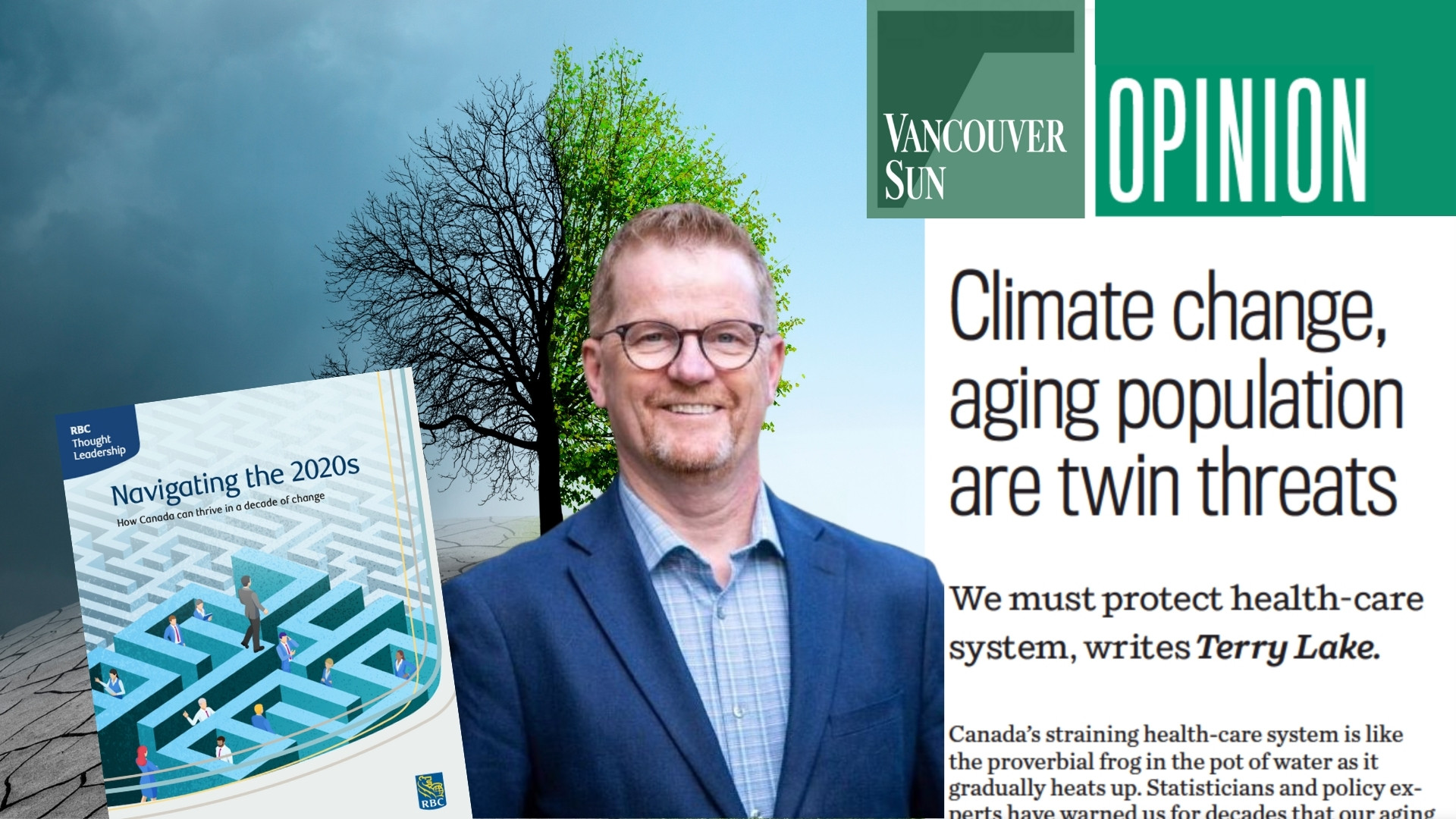By Terry Lake
Canada’s straining health-care system is like the proverbial frog in the pot of water as it gradually heats up. Statisticians and policy experts have warned us for decades that our aging demographic would reach its own boiling point where demand for services would outpace supply without corrective action.
The warning was not heeded, and now provinces are scrambling and issuing demands for increased federal funding while trying to address health-care labour shortages that were predicted long ago.
Perhaps this is a good time for us to stop and listen to what experts say is coming next.
In January 2020, RBC Thought Leadership — a think tank run by the bank’s chief economist — released “Navigating the 2020s: How Canada can thrive in a decade of change,” a report that identifies climate change and the aging demographic as our country’s twin existential threats.
The link between climate change and health care may not seem obvious at first, but consider the devastation B.C. experienced in 2021. A deadly heat dome killed hundreds of older adults in their homes, and rampant wildfires made the air toxic to breathe across dozens of communities. Then major flooding forced the evacuation of entire towns, including their elderly populations living in care homes.
Those examples show us how a burning planet can upend health care services. It is why the B.C. Care Providers Association has called upon government to fund infrastructure and equipment that can mitigate the impact on seniors from extreme weather and poor air-quality conditions.
Regarding Canada’s other existential threat — our aging demographic — census results released in April showing 85-plus as the country’s fastest-growing age cohort should be a huge wake-up call for elected leaders and the public.
The surge in demand for health-care services required by older adults is inevitable. The RBC report forecasts that caring for seniors will consume 55 per cent of provincial and territorial health-care budgets in 2030, versus 45 per cent now.
These projections come at a time when we are already experiencing shortages — both in the number of available beds and the staff needed to deliver care. B.C. was already 3,000 long-term care beds short of current demand, according to a study released in 2019. Today, as many as one-quarter of seniors in hospital would be better cared for in the community — if we only had enough home support staff or care beds for them.
The Conference Board of Canada projects that over the next two decades B.C. alone must build up to 30,000 net new care beds, or 1,500 per year. To put that number into perspective, the province has tendered approximately 800 net new long-term care beds since 2017. Even with approved funding it will take up to five years before a newly constructed care bed is occupied.
To staff all those beds, the B.C. Care Providers Association estimates that up to 19,000 new health workers are needed in B.C., including 13,000 health-care assistants and 4,000 nurses.
These are daunting numbers yet there are some hopeful signs from the federal and provincial governments, particularly when it comes to addressing labour shortages through increased immigration and the recognition of foreign credentials for health professionals. Notwithstanding the B.C. Care Providers Association and others long advocating for these changes, the process of implementing them is painstakingly slow.
Our present state of unpreparedness for what’s coming is not just government’s problem to fix but society’s challenge to meet. The role of the private sector in the delivery of seniors’ care should no longer be up for debate as it will take everyone — whether they work for a not-for-profit, for-profit or government-owned and -operated organization — to meet this challenge.
There are steps we must take immediately, such as investing in our workforce through training and valuing their role in supporting the health-care system. Workers on the front lines have been through a lot during the past few years, and we must help them improve their skills, and acknowledge the needs of their physical and mental health.
We can no longer ignore the pervasive problem of ageism either. Decisions that undervalue or dismiss the importance of older adults are unacceptable.
Letting the clock run out is not a strategy. It’s time to make our health-care system more resilient in the face of these existential threats.
Originally published in Vancouver Sun.
***
Listen below or click here to hear BCCPA VP, Public Affairs Mike Klassen discuss these existential threats on CKNW Mornings with Simi.




